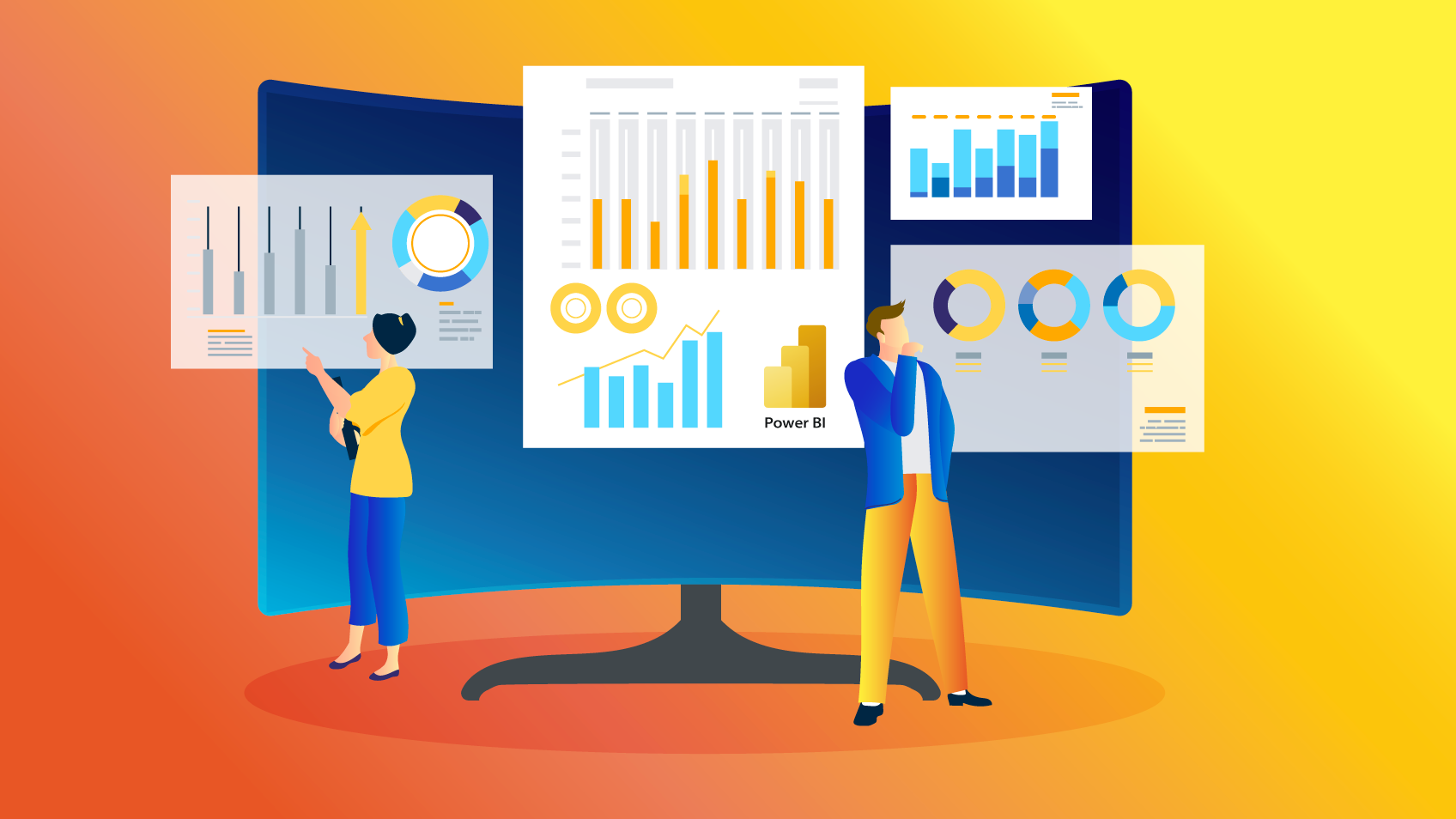Data is the most important resource in modern day business. It can either make or break an organisation. Power BI and Microsoft Fabric are powerful tools that businesses employ to make the most of data. These platforms are at the core of business intelligence, and when paired with Azure Data Factory they become an extremely powerful tool for data analytics and making decisions.
Power BI is Your Business Intelligence Companion
Power BI is a business intelligence tool from Microsoft that allows organizations to visualize their data and share information. Power BI allows users to build interactive reports and dashboards, transforming raw data into useful insights.

Power BI can be tailored to suit your needs whether you’re a startup or a large firm. Power BI seamlessly integrates many data sources and makes it simple to combine information from various platforms and databases. Even non-technical users are able to create powerful reports and analyses with its intuitive drag-and drop interface.
The Power BI platform supports real-time processing of data, ensuring you’re working with the most recent information. It offers a wide array of visualisations, which allows the data to be presented in a palatable and appealing way. It is crucial to work together and share reports. This will improve decision-making within your company and create a more data-driven work environment.
Microsoft Fabric The weaving Together of Data Excel
Microsoft Fabric is an underpinning framework which integrates and orchestrates data from various Microsoft services. Fabric is the layer that transforms your data into an easily accessible and usable entity. This allows companies to get insights fast.
As companies deal with increasing data volumes, Microsoft Fabric provides the foundation for data consistency as well as integrity. It works with a variety of services, ranging from Azure Data Lake Storage and Azure SQL Data Warehouse, to Power BI and more. The interconnectedness of the platform allows data flow and insight across multiple sources.
Microsoft Fabric’s capabilities to transform data provide an excellent example of its flexibility. Use it to clean up and prepare data for analysis. Additionally, you can use it to ensure that data complies to your company’s guidelines for data governance. Microsoft Fabric is the system that guarantees that your data is secure precise, reliable, and is ready for analysis.
Azure Data Factory – The Gateway to Data Transformation
Azure Data Factory is another essential component in the modern business intelligence landscape. It is a cloud-based solution that allows you to manage and plan data-driven processes. Azure Data Factory allows for meaningful insights by orchestrating the transformation of data and its movement.
One of the major benefits of Azure Data Factory is the flexibility it offers in connecting to different data sources. Your data is able to be integrated seamlessly, whether on-premises, cloud-based or both. This gives you complete visibility of your entire data environment, regardless of where your data is. It supports batch processing, stream data in real-time, and big analysis of data. This makes it ideal for a variety of scenarios.
Azure Data Factory offers a visual interface to facilitate the design of data pipelines. It’s easy to design and schedule data workflows, even if you’re not a coding expert. This allows users to be in charge of data integration as well as self-service data preparation.
The Power Trio: Power BI, Microsoft Fabric, and Azure Data Factory
When Power BI, Microsoft Fabric, and Azure Data Factory come together to form a dynamic trio that can transform your data analytics efforts. This is how they interact:
1. Data Integration Azure Data Factory can connect to many data sources, and guarantee that your data is available. The data integration feature feeds into Microsoft Fabric, which orchestrates data across various services. This ensures that your data is well-organized, cleaned, then is ready to be used in Power BI analysis.
2. Microsoft Fabric’s Data Transformation feature is essential to meet your analysis needs. Fabric helps ensure that data is ready for insights when it comes to cleaning or transforming data.
3. Power BI will take over after your data has been refined and is ready to be used. You can design visually appealing dashboards and reports that make complicated data easier to comprehend. You can then share these data with your colleagues, to encourage data-driven decision-making.
4. Scalability: Azure Data Factory scales easily to handle the growing data volumes, and the combined power of Power BI and Microsoft Fabric makes sure that your data remains constant and reliable even when your business grows.
5. Power BI & Azure Data Factory can provide real-time information that is critical to a rapid decision-making process.
Conclusion
In order to remain competitive in today’s business intelligence market companies need to be able leverage data effectively. Power BI combined with Microsoft Fabric and Azure Data Factory can take your business analytics to the next level. These three components can help users create stunning visualizations as well as improve consistency of data and improve workflows. Discover the potential of your data by utilizing business intelligence.